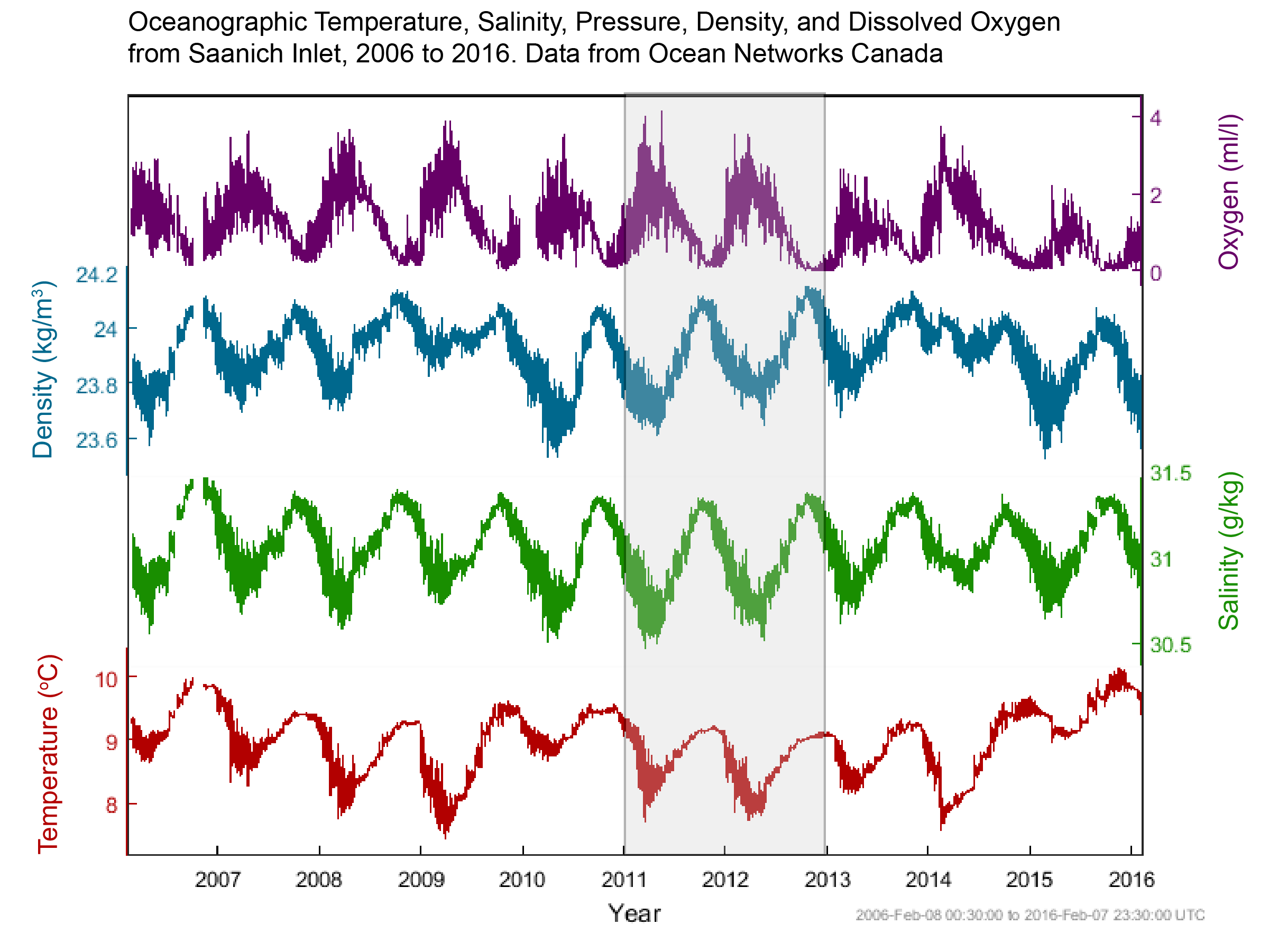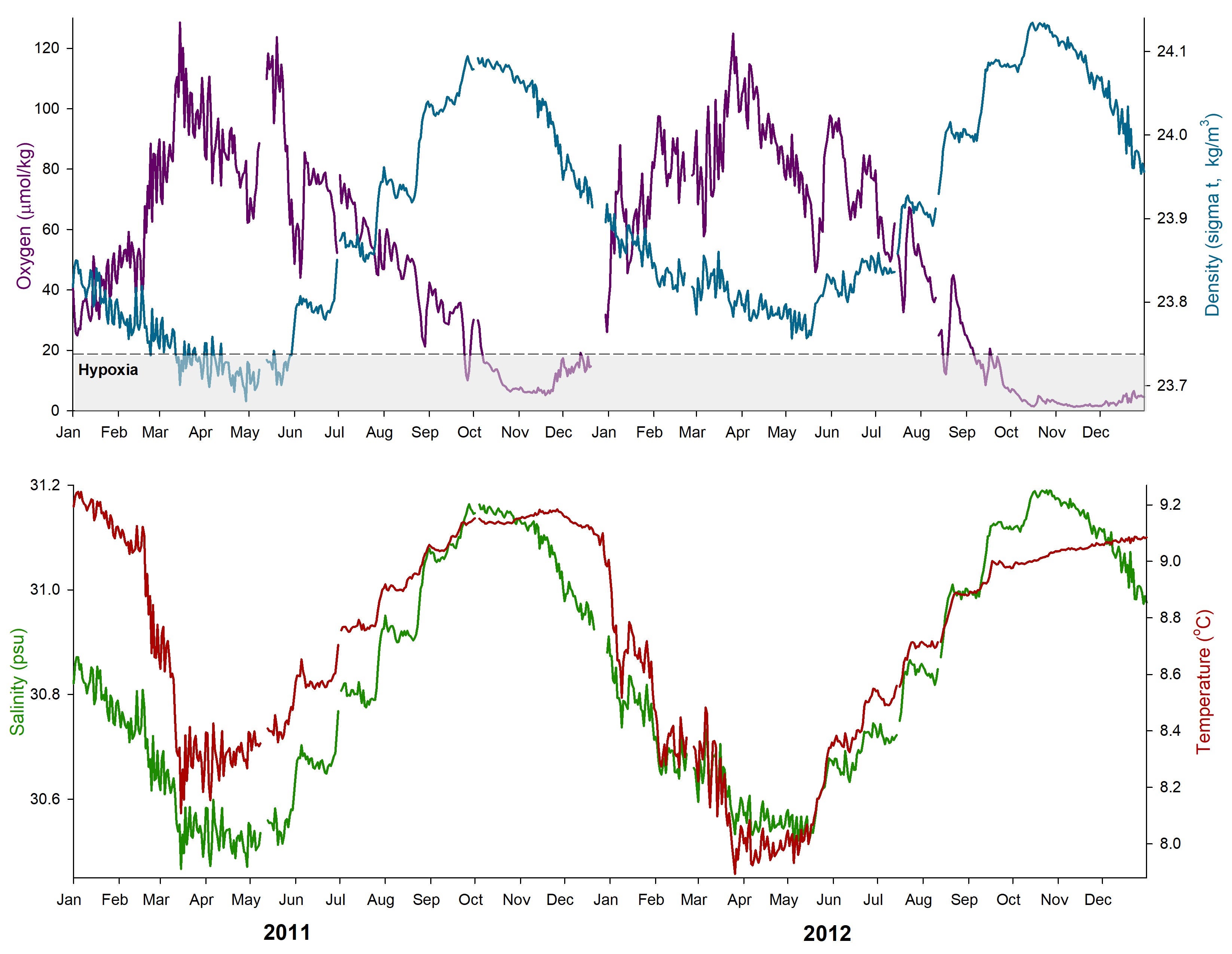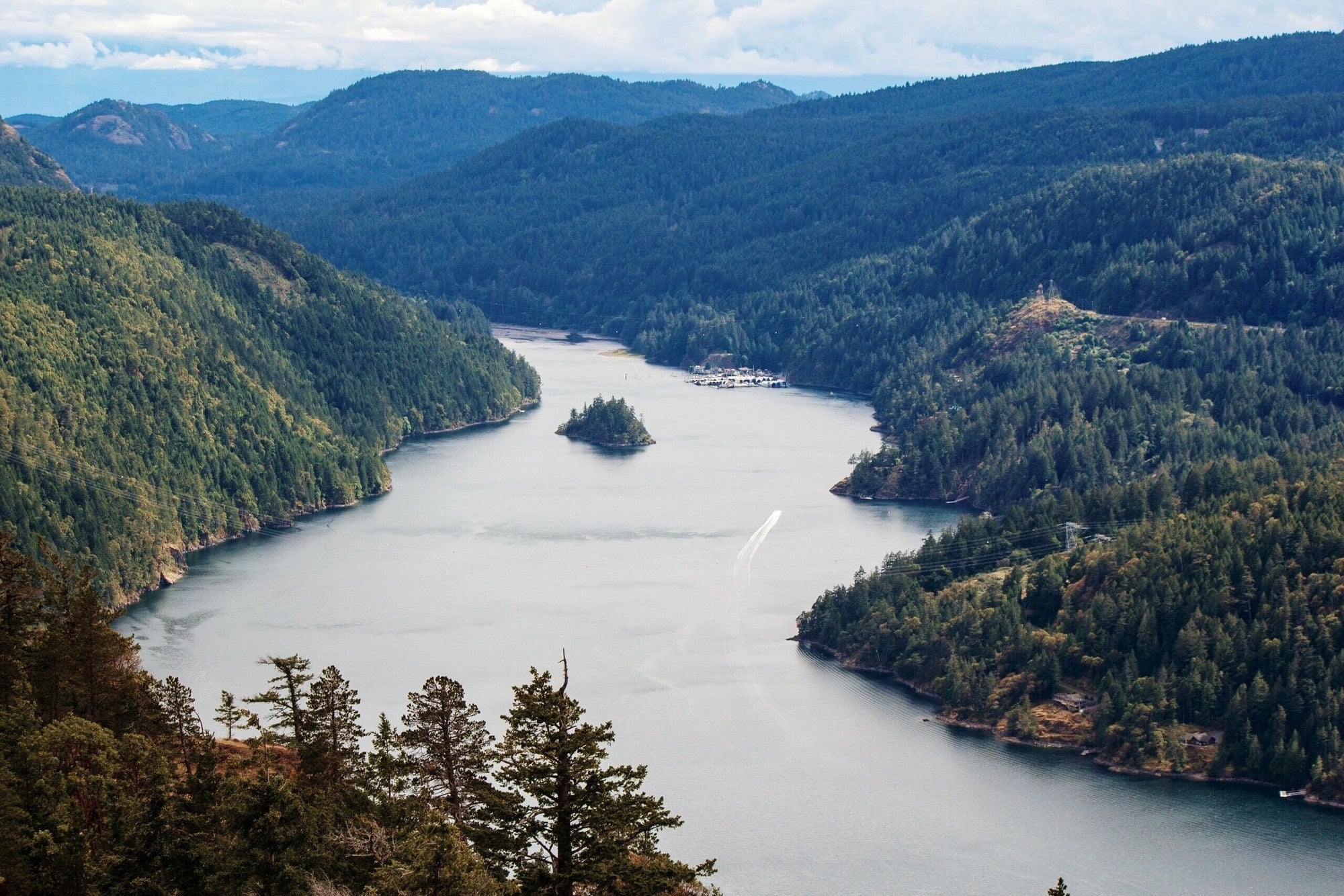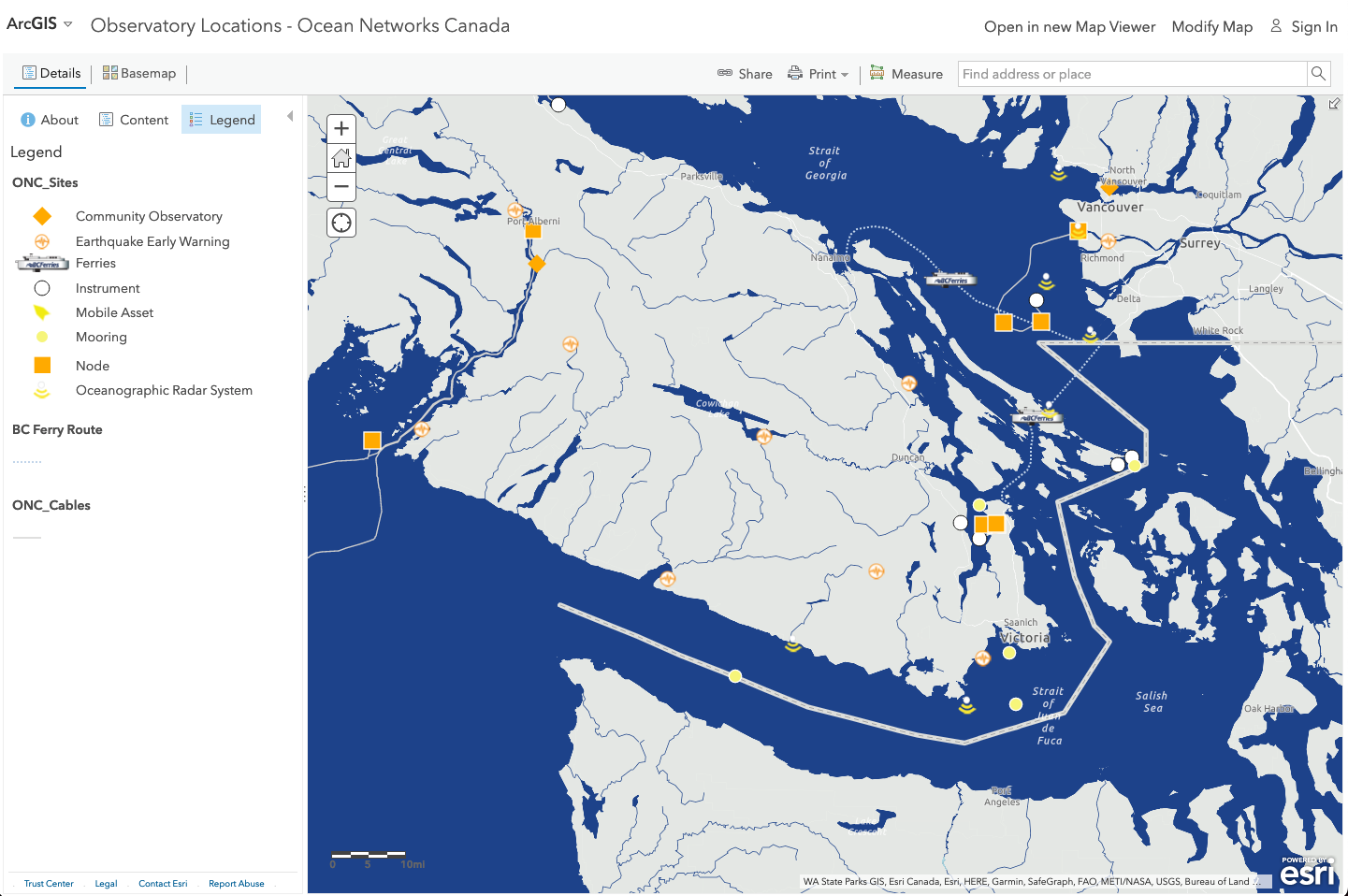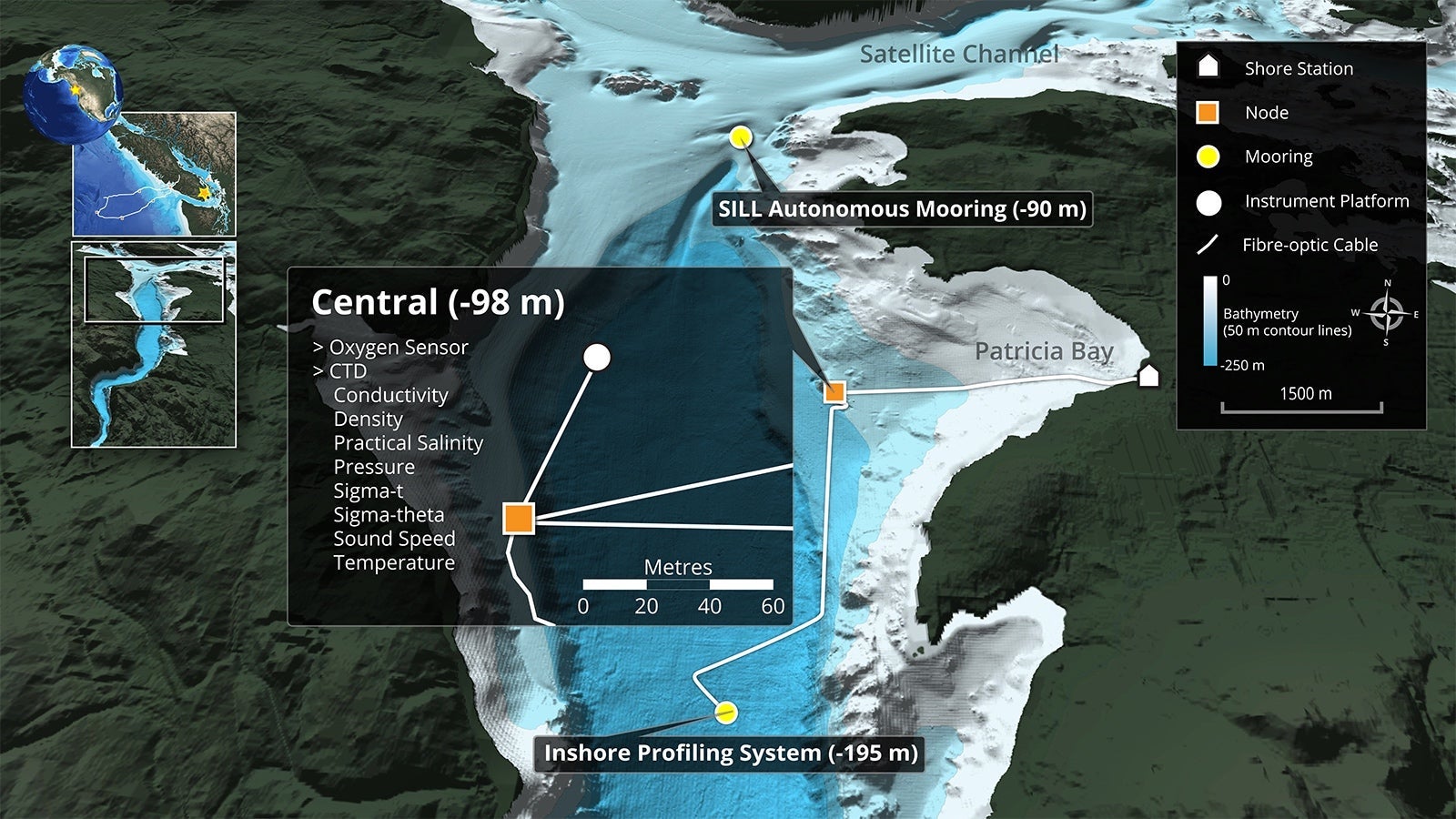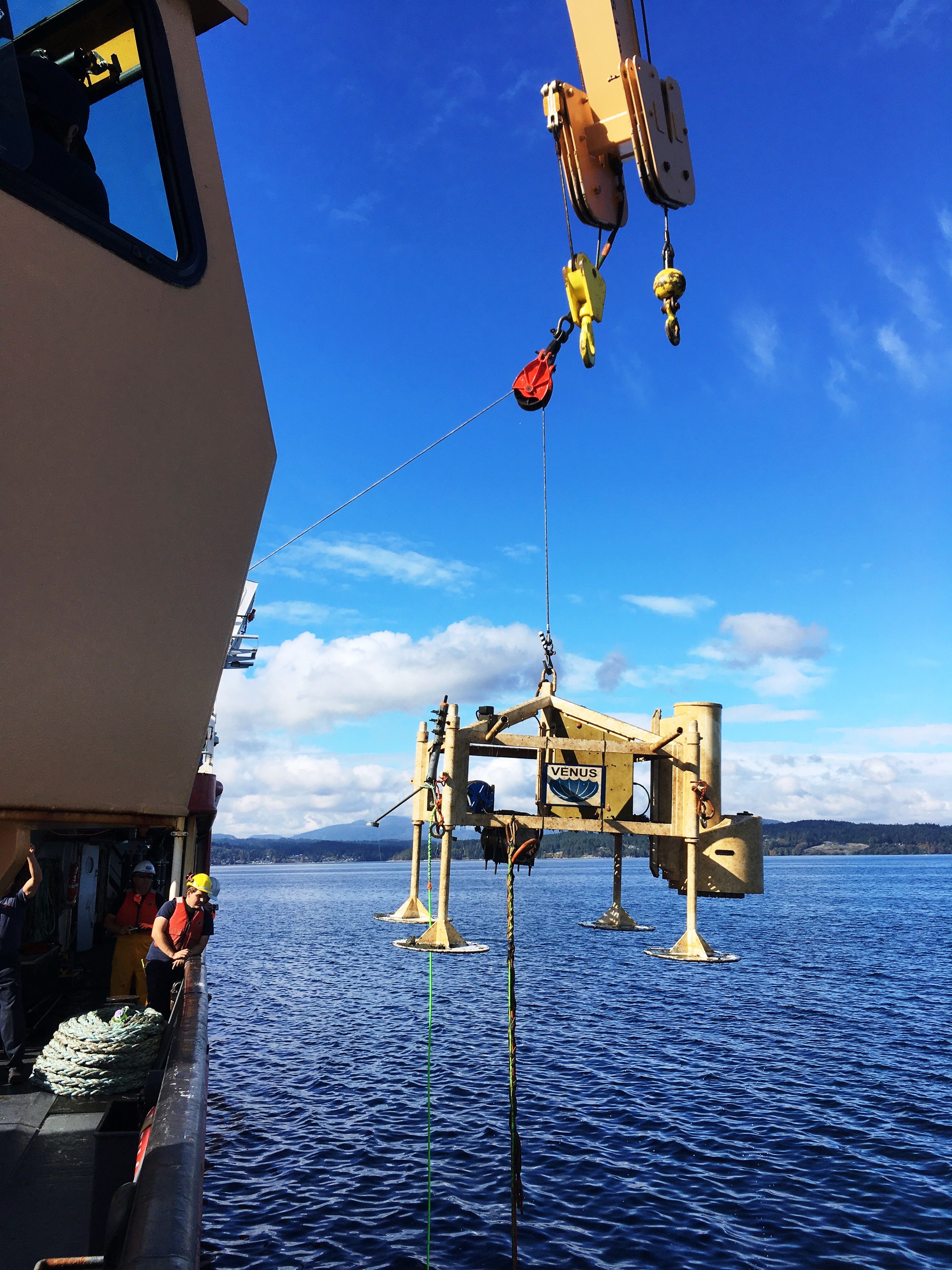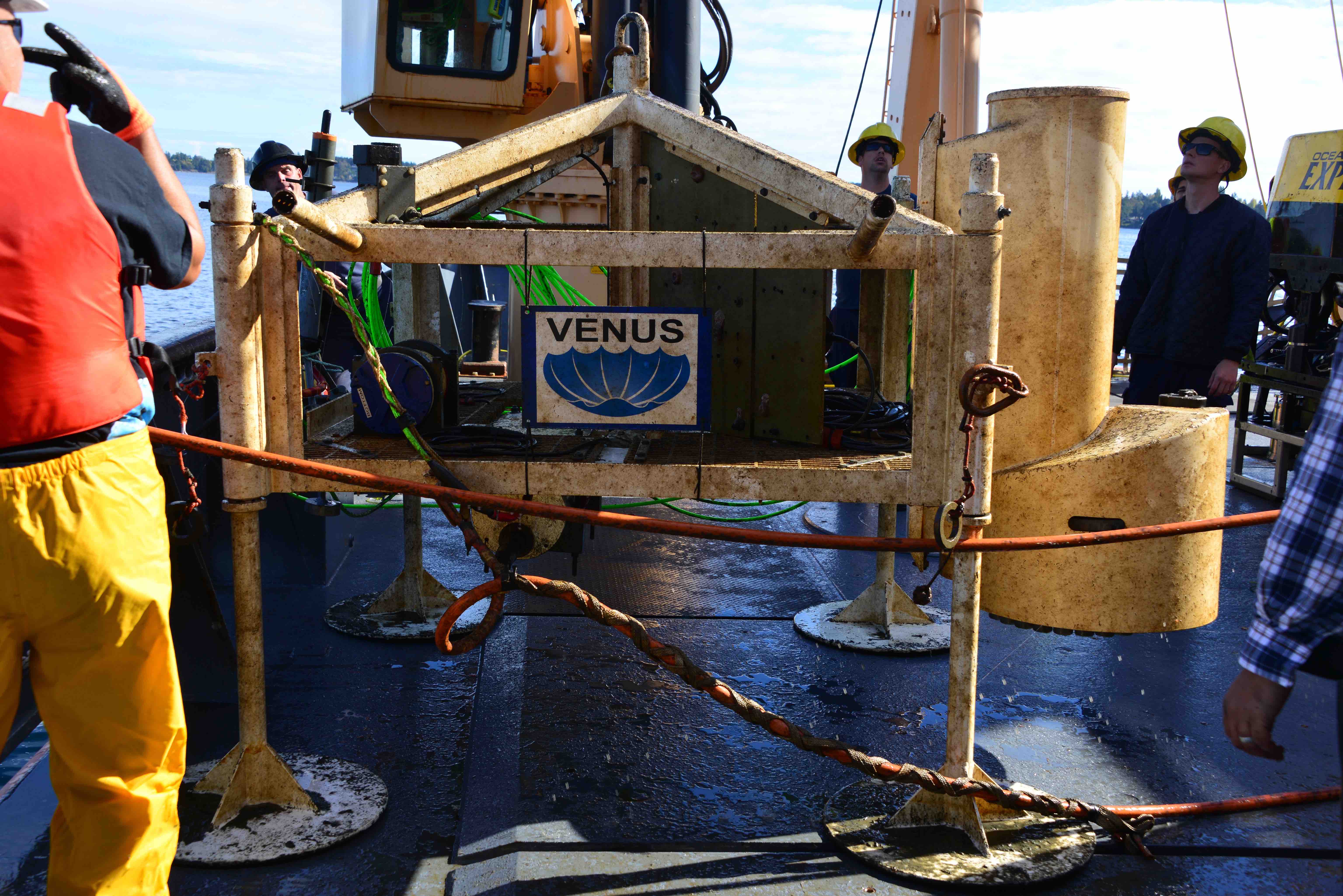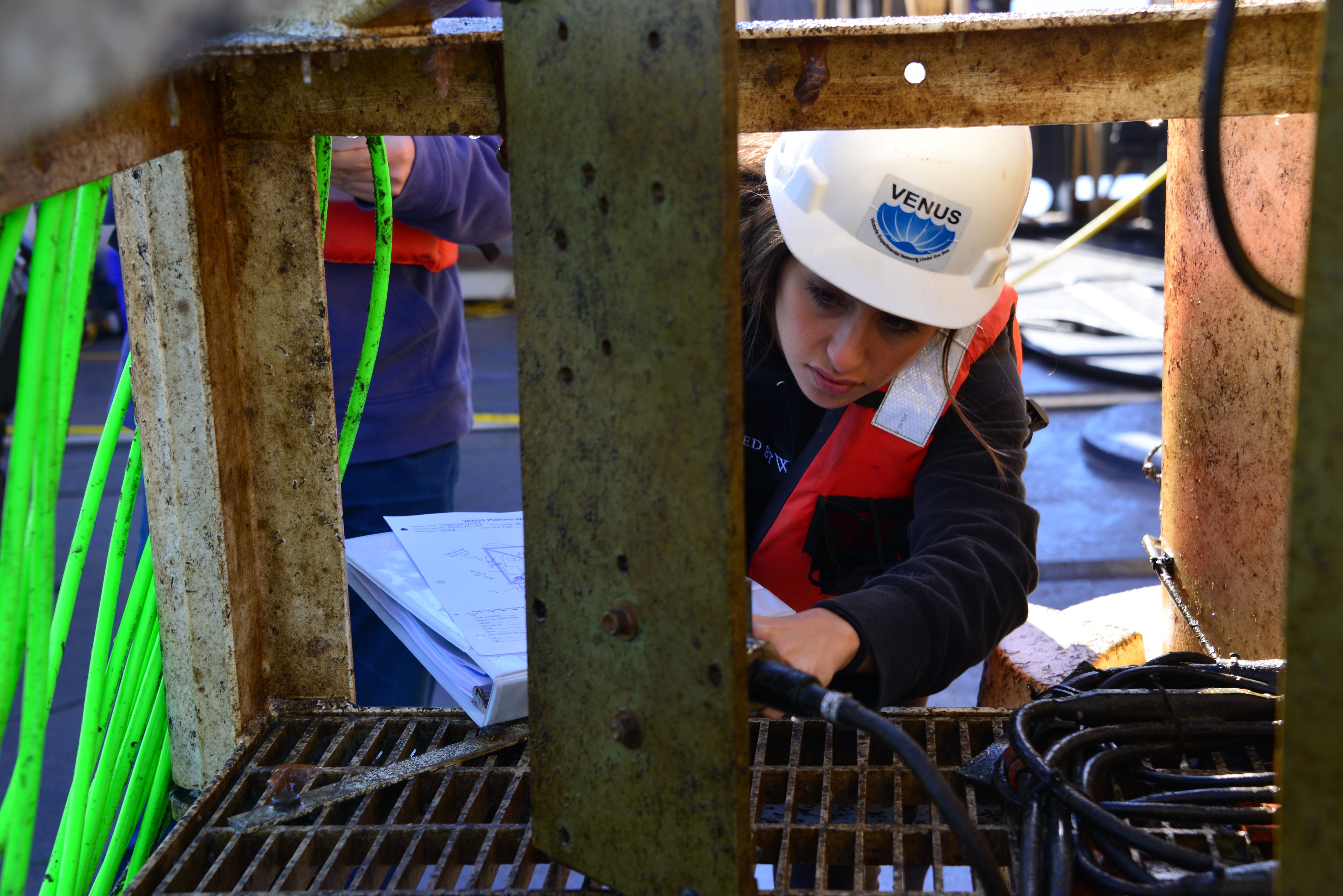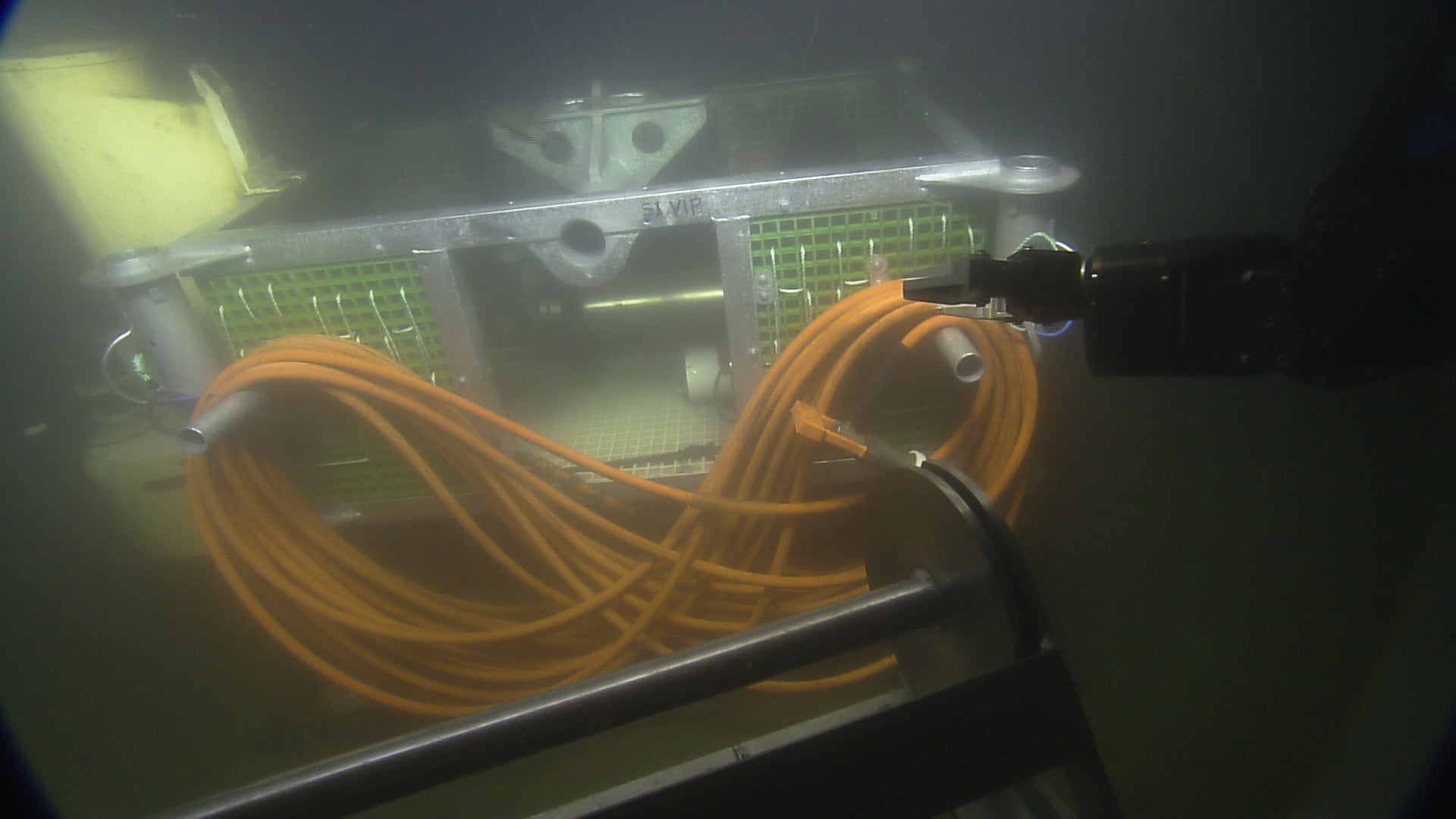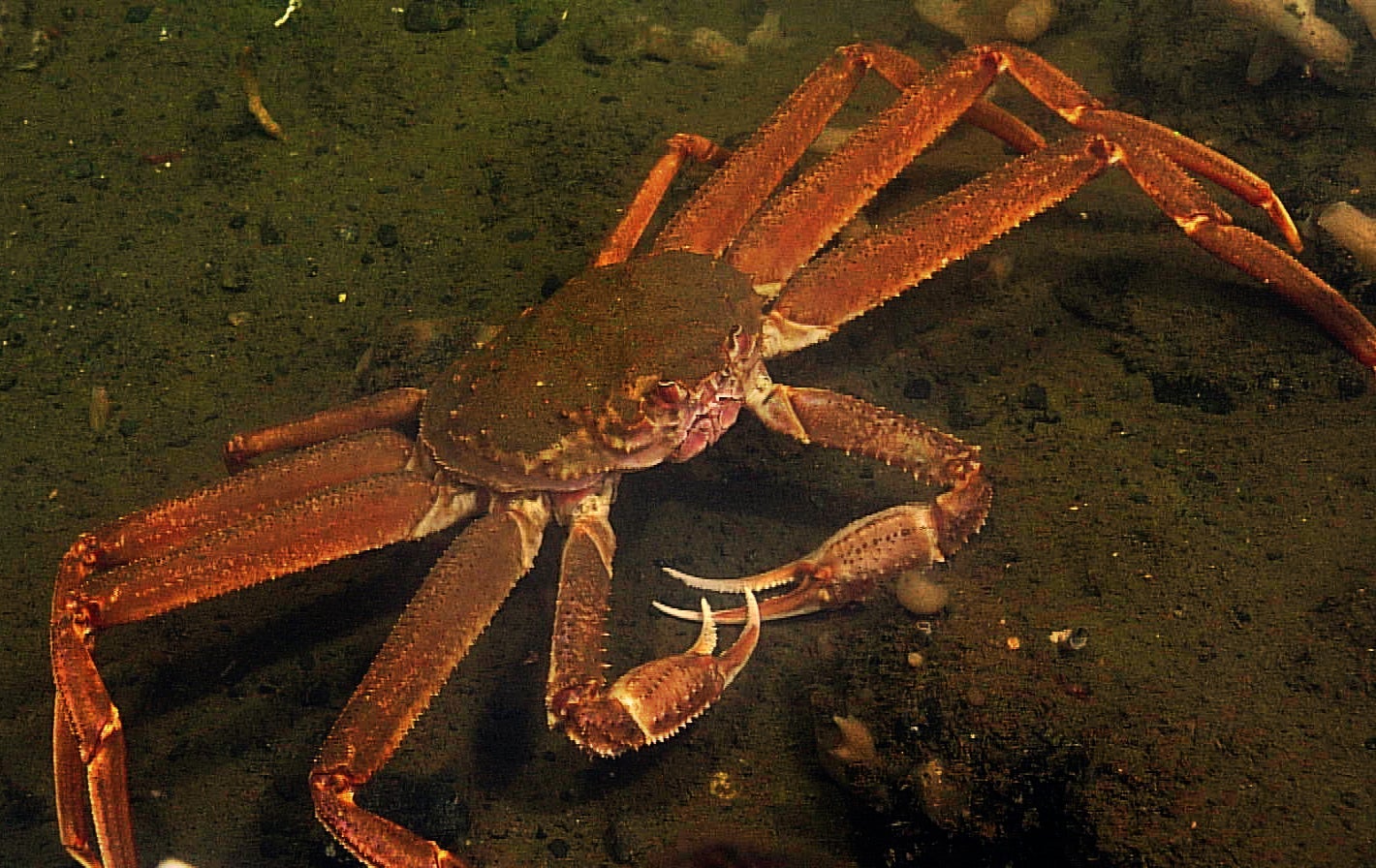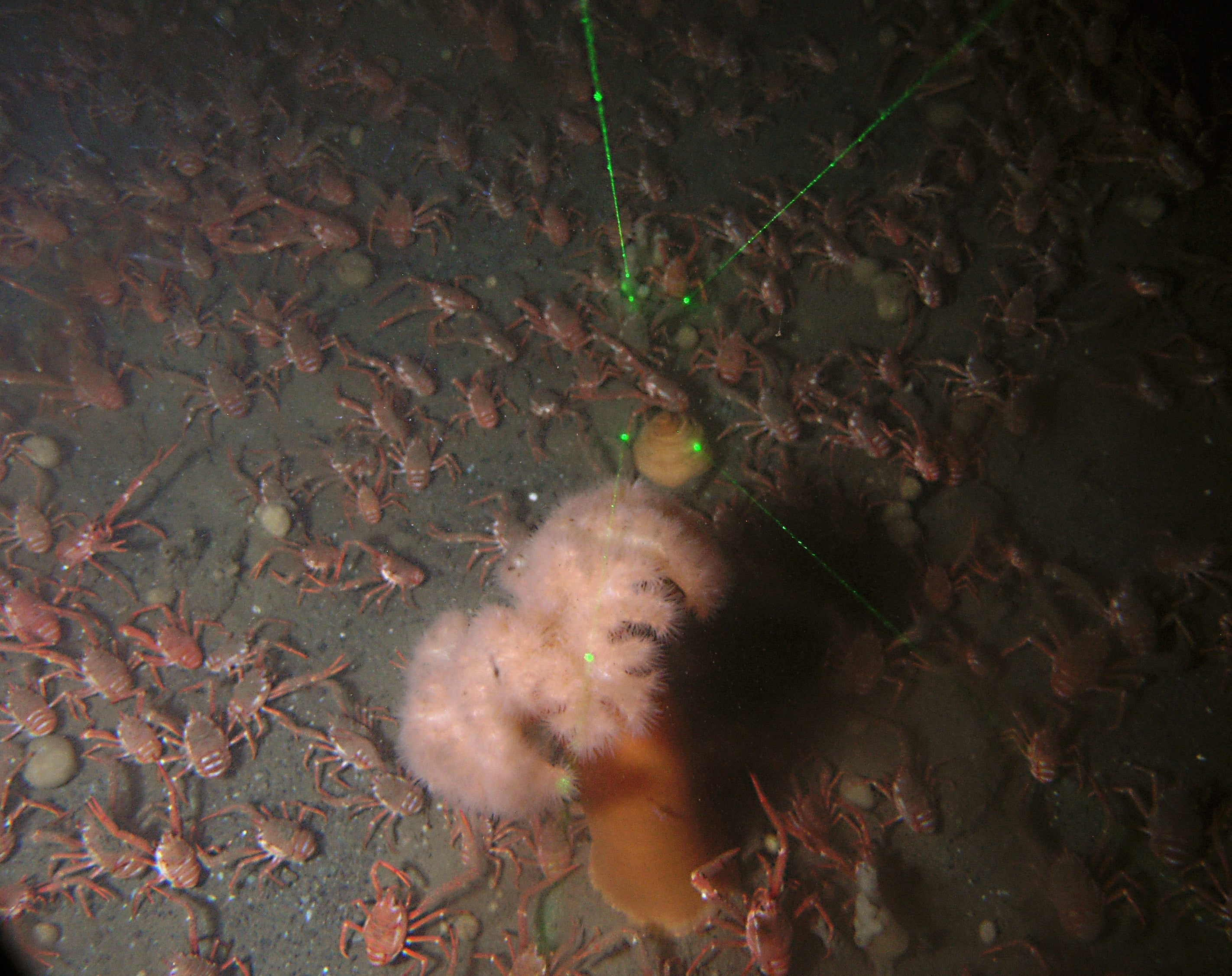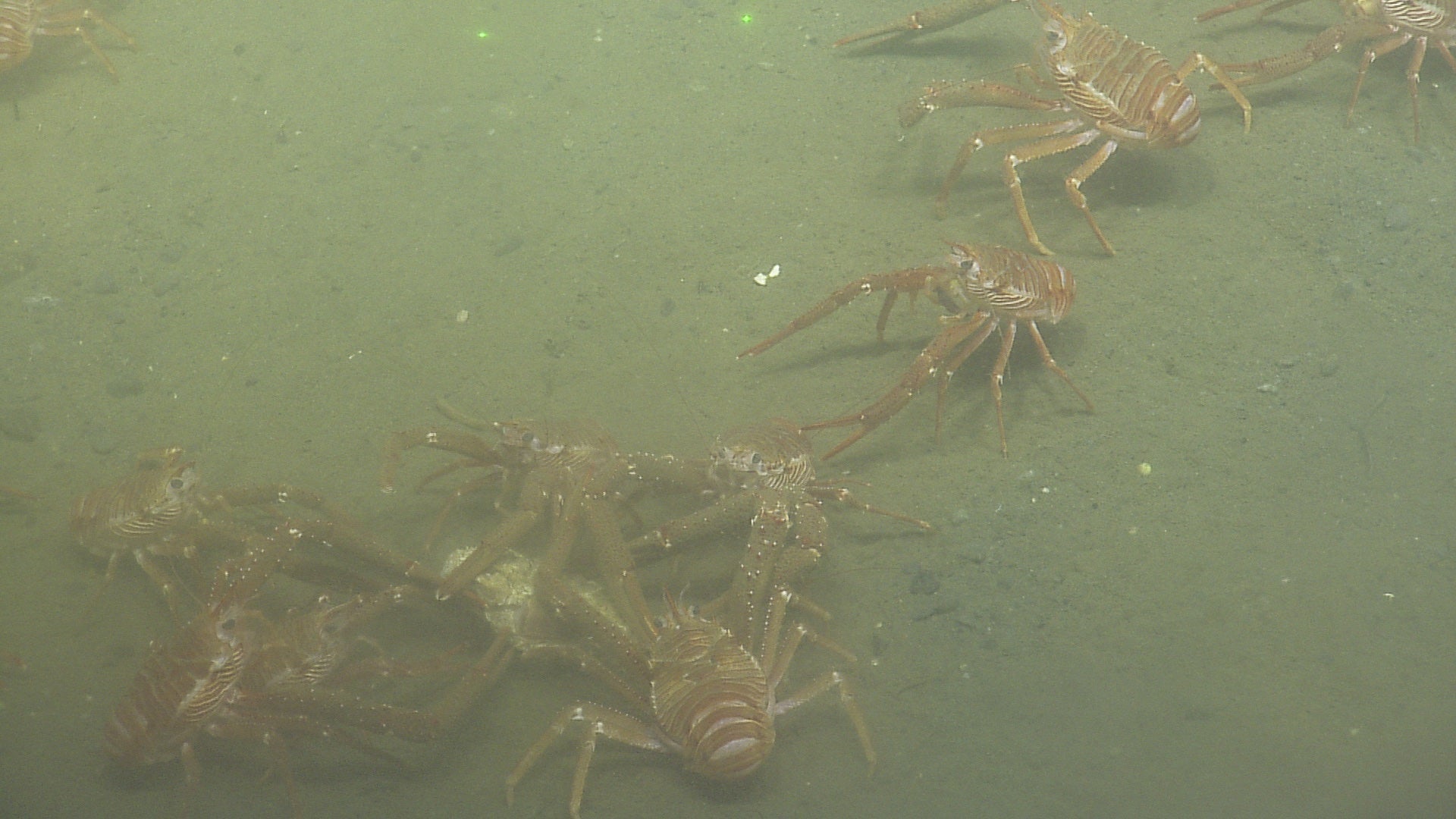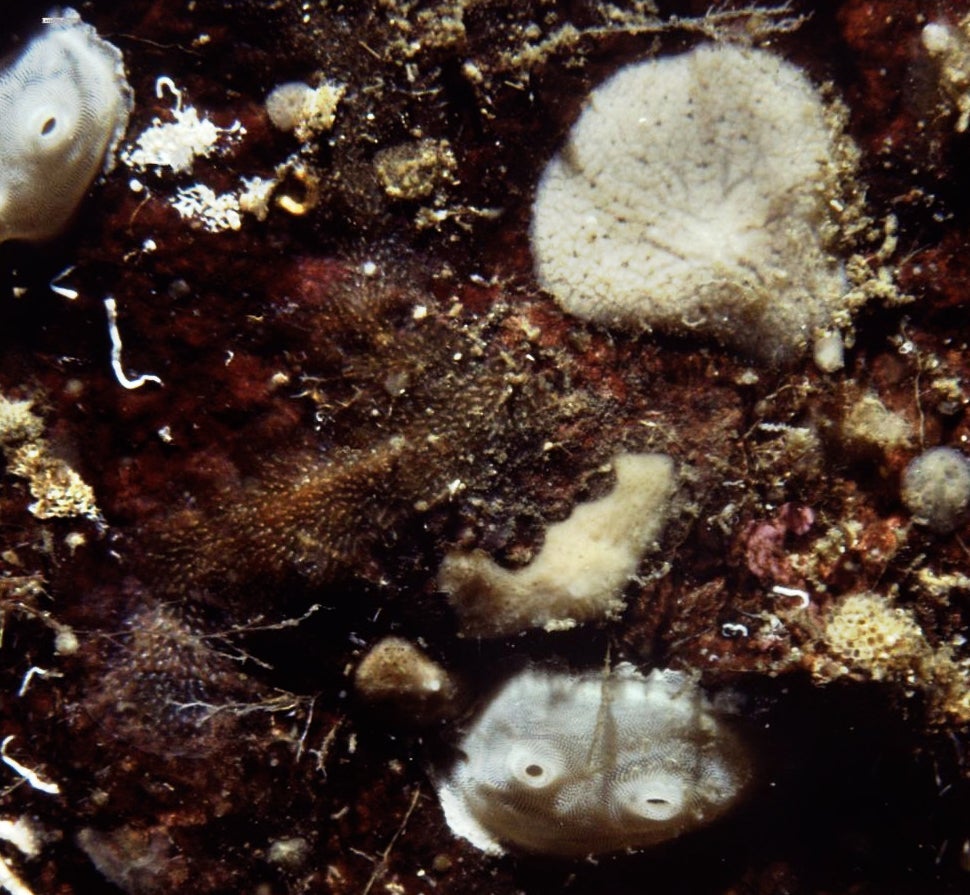Annual Cycle of Hypoxia at Saanich Inlet
Saanich Inlet is a semi-enclosed, highly productive, and highly stratified fjord within the Salish Sea on the southern end of Vancouver Island, British Columbia in Canada. It is characterized by seasonal hypoxic and anoxic conditions in the deeper parts of the basin. The fjord has a shallow sill at the mouth-ward end at approximately 70 meter depth, and a deep central basin at approximately 200 meter depth. A long-term cabled observatory, the VENUS Array, run by Ocean Networks Canada, has continuously observed the Saanich Inlet since 2006, making it an ideal place to examine hypoxia dynamics. The VENUS Array is located toward Patricia Bay and is approximately 100 meter depth.
Due to the shallow sill, deep water in the fjord does not exchange with Haro Strait, and ultimately the northeast Pacific continental shelf upwelling system. However, surface water does exchange back and forth across the sill because of spring-neap tidal mixing which results in periodic influx of nutrients into the Inlet. During the growing season (i.e. spring to fall) these nutrient intrusions lead to large phytoplankton blooms. Following these blooms, large amounts of particulate organic matter are sink to deeper waters and sediments, where bacteria consume them, breaking down the organic matter and drawing oxygen out of the water column leading to hypoxia and anoxia. As the water column is highly stratified with dense, salty bottom water partitioned below fresher, less dense surface water the bottom water cannot mix vertically to replenish its oxygen. Additionally, because of the shallow sill, the bottom water cannot mix horizontally with the oxygenated waters in the Haro Strait. As a result, the bottom water in the Saanich inlet remains hypoxic/anoxic.
In the fall, oxygen in the Saanich Inlet bottom water is restored through deep-water renewal events. For a deep-water renewal event to occur, high density water needs to make it up over the shallow sill and sink down to the bottom of Saanich Inlet. The high density water needed for these events comes from the salty, deep-ocean water upwelled off the coast that comes up through the Straits of Juan de Fuca. This salty water builds up on the sill during the fall until it reaches a critical mass and boluses of the water move across the sill and into the deep basin of the inlet. These dense, oxygenated waters displace the hypoxic/anoxic waters upward through the water column. The exact timing, intensity and duration of depletion and renewal phases vary between years, but seasonally they predictably occur each year.
The VENUS array in Saanich Inlet captures this annual oxygen cycle. As the array is located at approximately 100m depth, hypoxia/anoxia at the Saanich Inlet node results from the deep, low oxygen water being displaced upwards from the deeper portions of the inlet.
